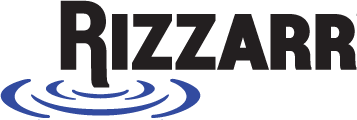To secure a competitive advantage in today’s fast-paced market, organizations must focus on strategies that streamline their sales operations and boost efficiency. The concept of sales velocity is emerging as a crucial metric for measuring the speed at which a company turns prospects into revenue. Understanding and optimizing this metric can lead to more effective sales strategies and a healthier bottom line. In this article, we will explore the fundamentals of sales velocity and delve into actionable tactics to improve it within your organization. Keep reading to discover the ways your business will experience growth through knowing how to increase sales velocity.
Understanding Sales Velocity and Its Impact on Business Growth
Sales velocity is a measure of how quickly a business can convert leads into actual sales. It reflects the rate at which a company’s sales pipeline generates revenue over a given period. By assessing this metric, businesses can gain insights into the effectiveness of their sales operations and pin down any areas that may be hampering performance. A high sales velocity indicates a robust sales process that delivers value quickly, creating a positive impact on growth and revenue.
To appreciate the nuances of sales velocity, one must analyze its components: the number of opportunities, average deal value, win rate, and length of the sales cycle. Each of these elements plays a pivotal role in determining how swiftly revenue is generated. When any of these components falter, it can lead to a bottleneck, slowing down overall sales progress and affecting growth adversely.
Leveraging Sales Analytics to Identify Bottlenecks
To identify and address bottlenecks that hinder sales velocity, organizations must leverage sales analytics. This involves using data to uncover trends, patterns, and insights within the sales process. Sales analytics can reveal problem areas, such as steps in the sales cycle that cause delays, deals that linger unpursued, or prospects that fail to convert, providing a blueprint for improvement.
In-depth analysis of sales data enables companies to pinpoint the stage at which most opportunities are lost. Such insights can trigger targeted improvements, whether they relate to the initial contact with prospects, proposal presentations, or final negotiations. By identifying these critical stages, businesses can implement strategic interventions to streamline the process.
Strategies for Streamlining the Sales Process
Streamlining the sales process is critical for maximizing sales velocity. This includes simplifying and optimizing each step in the sales cycle, from lead generation to closing a deal. By eliminating unnecessary procedures and automating routine tasks, sales teams can dedicate more time to engaging with prospects and building relationships.
Companies may consider adopting a modular approach to sales presentations and proposals, which allows for quick and tailored responses to customer needs. This not only reduces turnaround time but also ensures that the proposals are relevant and personalized, thereby increasing the chances of conversion.
Implementing Hot Runners Systems for Accelerating Production
In some business contexts, such as manufacturing, sales velocity can also hinge on the efficiency of production processes. For industries employing injection molding, systems like hot runners are crucial tools to improve production speed and quality. Hot runners enhance the fluidity of plastic material during injection, minimize cooling time, and substantially reduce waste. As a result, they heighten production efficiency and elevate a company’s capacity to fulfill orders promptly. Hence, investing in hot runners systems presents a direct method to augment sales velocity, as it spurs the output quality and quantity, leading to heightened customer satisfaction and, consequently, boosted sales.
Enhancing Sales Team Performance through Training and Incentives
To increase sales velocity, it is crucial to empower the sales team with ongoing training and attractive incentive programs. Training ensures that salespeople are not only well-versed in the product or service but are also capable of handling objections and negotiating effectively to close deals faster. Moreover, it helps them adopt best practices and stay updated on industry trends.
Incentives, on the other hand, are a powerful motivator for sales teams. These could include monetary bonuses, recognition programs, or career advancement opportunities. Incentives should be structured to encourage behaviours that align with the organization’s goals, such as rewarding the shortening of sales cycles or nurturing long-term customer relationships.
Implementing Technology Solutions to Accelerate Sales Cycles
Technological advancements are revolutionizing the sales landscape, enabling organizations to accelerate sales cycles dramatically. Implementing the right technology solutions can generate profound efficiencies and empower sales teams to focus on more strategic activities.
Artificial intelligence (AI) and machine learning are offering predictive insights that drive smarter decision-making. These technologies can identify patterns that signify a high likelihood of conversion, allowing teams to prioritize leads with the greatest potential.








